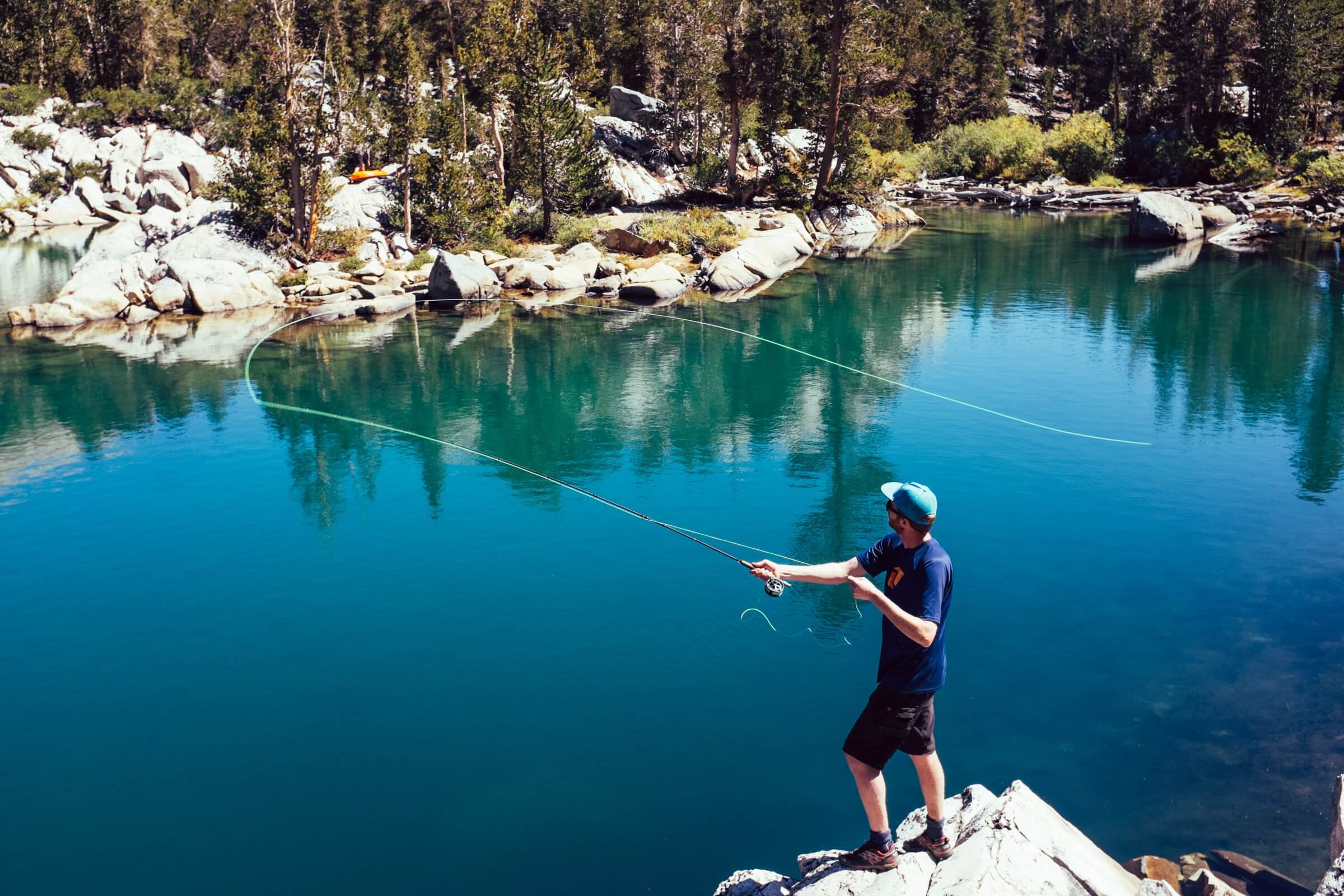
Lafly fishingRequires a solid knowledge base and equipment that is adapted to the environment and thefishYou're after. Your choice will be different if you plan to fish fortroutAtriverOr if you are fishing for sea bass withstreamer.
All goodflycatcherShould not skimp on the rest of its equipment,reel,nymph,streamer, fly of severalcoloursAnd bottom oflineTo maximise performance. You'll find all the equipment you need in our collectionfly fishing.
You will see that the choice ofwireFor your practice will not be easy: you'll have to differentiate between an optimallineTo understand the different levels of buoyancy, the many profiles and, finally, which number to choose.
All these factors are taken into account when you make your choice: one will be better suited to withstand the wind, the other will make it easier to move aroundThrowsPrecise and will be better suited tocanesWith a number offeet.
Once again, before you do anything else, ask yourself the questionfishThat you will be fishing for (trout, ) and the spot where you'll be doing most of your fishing. Once everything is clear in your head, you're ready to read on, friendsfishermenHere we go!
The differences between synthetic and natural silk
The natural option
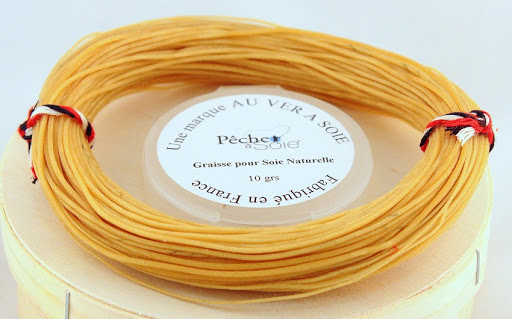
As you can imagine, each of these options is interesting. However, they all have their advantages and disadvantages, which you need to take into account when making your choice and embellishing your homereelTo prepare you for battle.
The natural thread comes historically from worms and sericulture, it will be very discreet and will benefit you to offer a pretty presentation during your attacks. It also has the advantage of being less resistant towindAnd has a very long lifespan, extending beyond 10 years without any real problems.
Very effective forfishermenAtnymphUnder thefly rod, we'd recommend it mainly for the latter, although its use is by no means limited to them.
It has its faults, of course, so you'll need to grease it for a while and then gradually stop. It needs a running-in period to reach optimum performance (around 10 hours). It should only be used withcanesWith parabolic or semi-parabolic action, too rapid an action would have the misfortune to break it. Last but not least, it will be difficult to practice in crowded spots because of its fragility.
The synthetic option
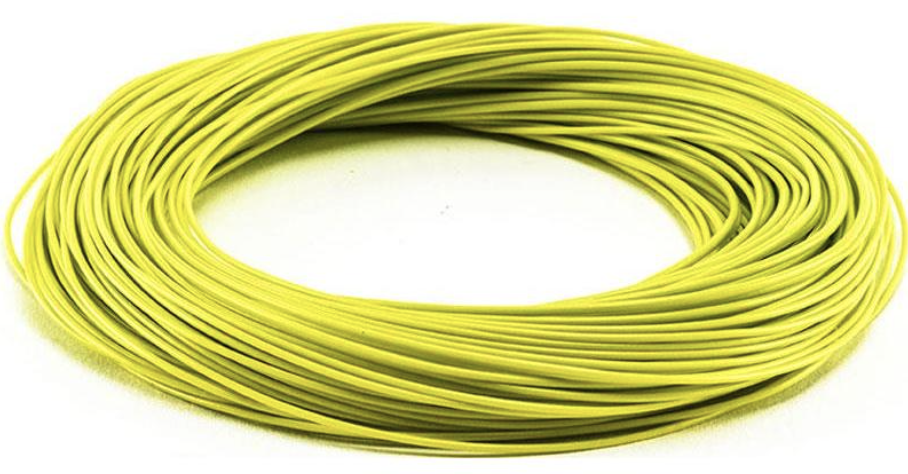
This option also has its share of advantages and disadvantages. You'll be able to fill your mill with more capacity, you'll be able to cast far without straining, thecoloursIt also requires very little maintenance.
However, it needs to be used with a "large arbor" mill to avoid the memory effect, despite the fact that some of them are smalldiameterLimiting this undesirable effect. It has a much shorter lifespan and runs the risk of marking your equipment with varnish marks.
Buoyancy levels
Floats
This buoyancy is the most widespread, mainly used for dry tosurface. She excels inriverOr in tanks, it rests directly on the water so you can pull it out with ease.
It's also easy to cast, so we'd recommend it for a beginner fly fisher, as it's the ideal diameter for getting started.
Intermediaries
Directly imported from Anglo-Saxon competitions, this is a solution that will enable you to adapt quickly to the conditions you face on different days.
The purchase of twobristlesIt's an intermediate size, so you can adapt to all circumstances and be highly versatile. It flows slowly, making it particularly suitable for mid-height, i.e. around one metre.
You'll also get a better insight into thewind, this will give you longer launches than with floating. There are fast and slow variants to suit your needs:
- A slow version, for precise and discreet immersions and for moving your flies just under the surface of the watersurface.
- A fast version, to fish deeper and reach your target depth more quickly.
The plungers
This is the sinking category, most often represented by the letter S. In order to maintain a certain uniformity and avoid only a part of them being submerged, they are compensated for in terms of their densities.
You'll be able to offer a beautiful, straight cast, the main advantage being that the presentation of your lures will be much more effective and realistic. You'll also find it easier to detect even the most subtle bites, which will only improve your strikes.
The different silk profiles
There are several profiles, or silhouettes for those who prefer them, that will enable you to adapt to a particular type of fishing and your objectives. But as always, they have their advantages and disadvantages, so it's important to be aware of their specific features when making your choice.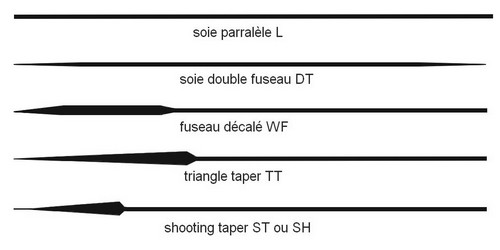
The parallel profile L
This L profile, also known as a single spindle, is mainly used on natural and non-synthetic versions. Its width is the same along its entire length, making it suitable for close and fine use only. We do not recommend it for beginners.
The DT double spindle profile
DT stands for double tap, and its conical shape, symmetrical at both ends, makes it highly versatile and perfectly suited to beginners. It's not for nothing that this profile is the most widely used.
In fact, it's relatively easy to throw, and you'll be able to make tough short- and medium-range shots just as easily. Another positive point, and not the least, is its durability - it's really good because it can be used on both sides. When the side you're using gets tired, you just flip it over and you're back in business.
The WF off-centre spindle profile
WF is an acronym for weight forward and has a thickening at one end. You'll use it for fishing long distances and/or in windy conditions. As the name suggests, the weight is put forward for maximum performance in these conditions.
The disadvantage is that your laying will not be as gentle as with previous profiles, and will be much steeper. However, new technologies are helping to alleviate this problem.
The TT fine-point tapered spindle profile
TT for triangle typing, its offset spindle is very long, reaching around 12m. It ends in a rat tail to enablethrowsAs long as the previous profile.
On the other hand, this time you'll keep a delicate rather than violent pose. Having said that, they are much less resistant than an off-centre spindle, so their lifespan is greatly impacted. We wouldn't recommend it for beginners, as this profile requires quite a bit of learning and technique, but once you've mastered it, it's a real treat.
Sizes or which number to choose ?
The sizes are represented by numbers from 0 to 15, which correspond to a weight per linear metre. Number 0 being the lightest to number 15 the heaviest.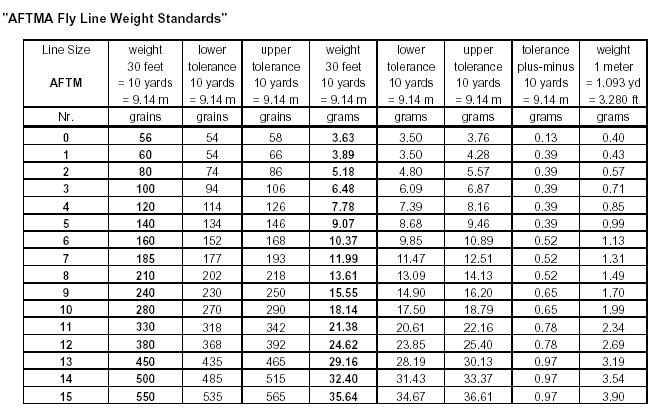
When you buy your rod of any length, the manufacturer will give you a recommendation that we advise you to follow to the letter. This is usually marked on the blank, following the AFTMA (american fishing tackle manufacturer association) symbol or a #.
If you find yourself with two numbers, don't panic, the smaller number corresponds to a DT profile and the larger to an off-centre spindle profile.
Our other articles on fly fishing :
